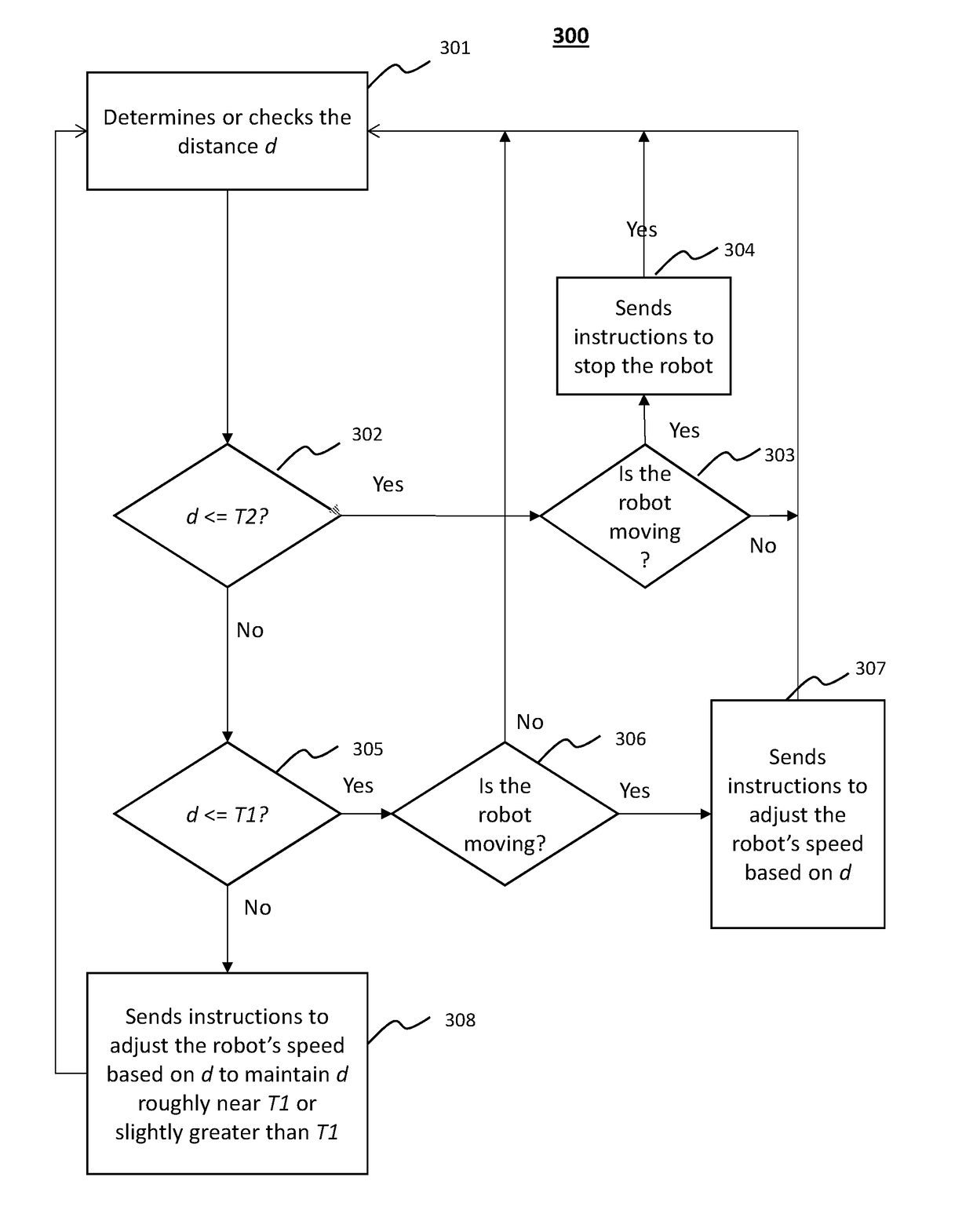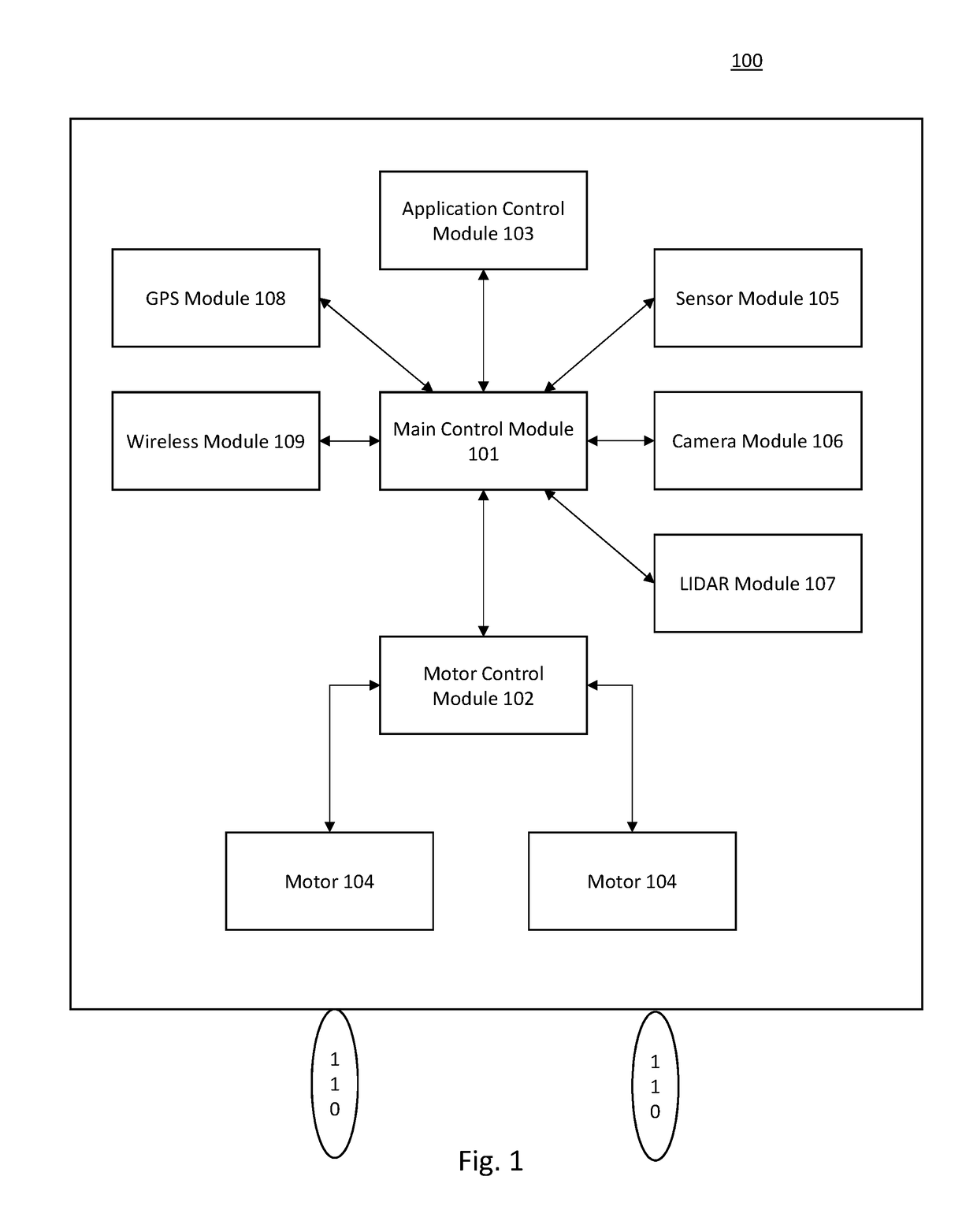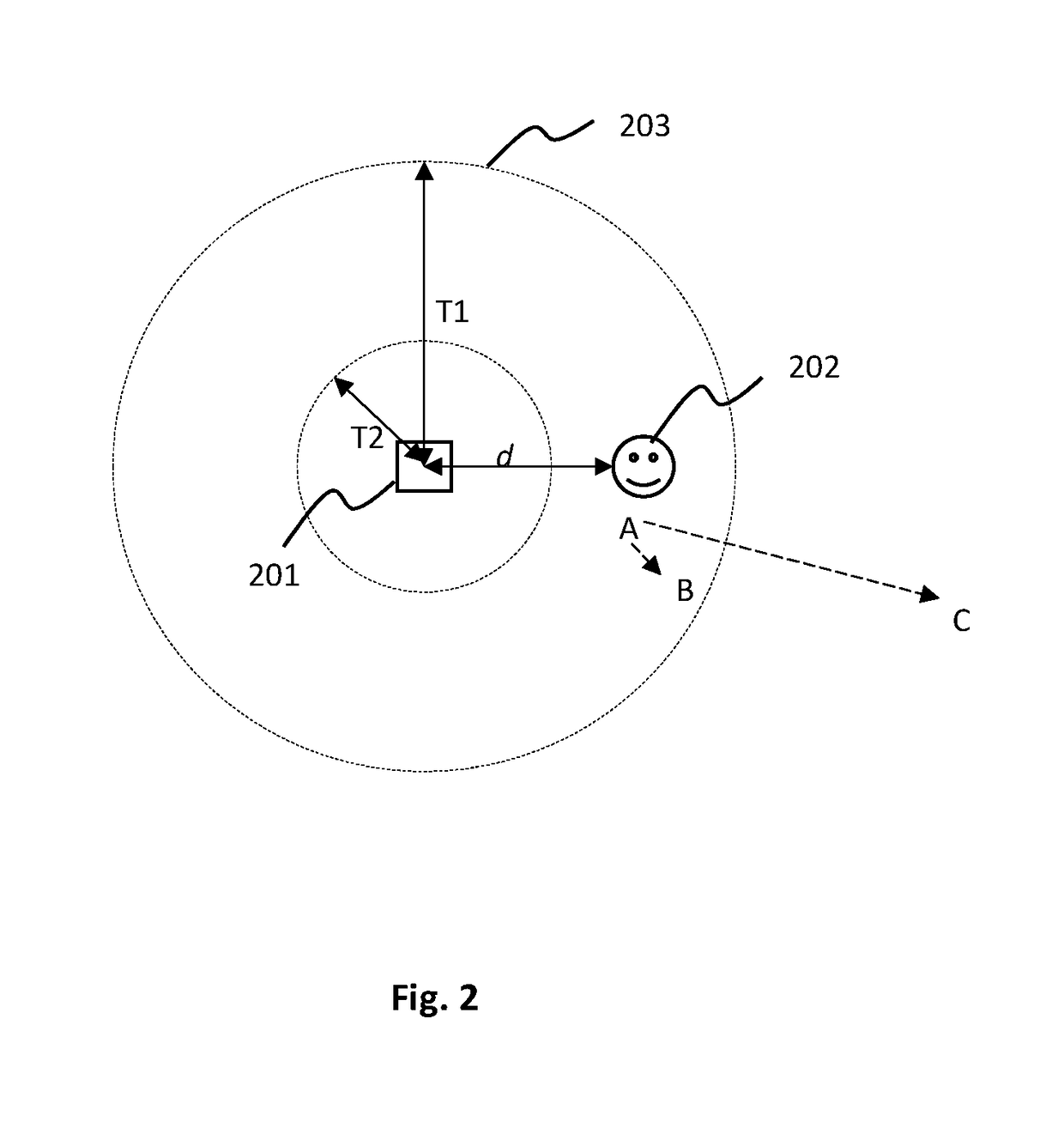Mobile Robot Navigation
a mobile robot and robot technology, applied in the field of robotic technology, can solve the problems of consuming unnecessary battery power affecting user experience, and too sensitive of the mobile robot, and achieve the effect of avoiding following or reacting
- Summary
- Abstract
- Description
- Claims
- Application Information
AI Technical Summary
Benefits of technology
Problems solved by technology
Method used
Image
Examples
Embodiment Construction
[0023]FIG. 1 is a system diagram of a mobile robot. In one embodiment, the mobile robot 100 has a main control module 101, a motor control module 102, an application module 103, a plurality of motors 104, a sensor module 105, a camera module 106, a LIDAR module 107, a GPS module 108, a wireless module 109, and a plurality of wheels 110.
[0024]The sensor module 105 includes one or more sensors (e.g., ultrasonic sensor, infrared sensor) for collecting location related data regarding the mobile robot 100 and / or a target object. In addition, the LIDAR module 107, GPS module 108, and / or wireless module 109 may also be used for collecting location related data.
[0025]The main control module 101 receives the location related data and calculates a navigation plan for the mobile robot 100 (including moving direction, distance, and speed) based on the location related data. The motor control module 102 receives the navigation plan from the main control module 101 and generates corresponding con...
PUM
 Login to View More
Login to View More Abstract
Description
Claims
Application Information
 Login to View More
Login to View More - R&D
- Intellectual Property
- Life Sciences
- Materials
- Tech Scout
- Unparalleled Data Quality
- Higher Quality Content
- 60% Fewer Hallucinations
Browse by: Latest US Patents, China's latest patents, Technical Efficacy Thesaurus, Application Domain, Technology Topic, Popular Technical Reports.
© 2025 PatSnap. All rights reserved.Legal|Privacy policy|Modern Slavery Act Transparency Statement|Sitemap|About US| Contact US: help@patsnap.com



